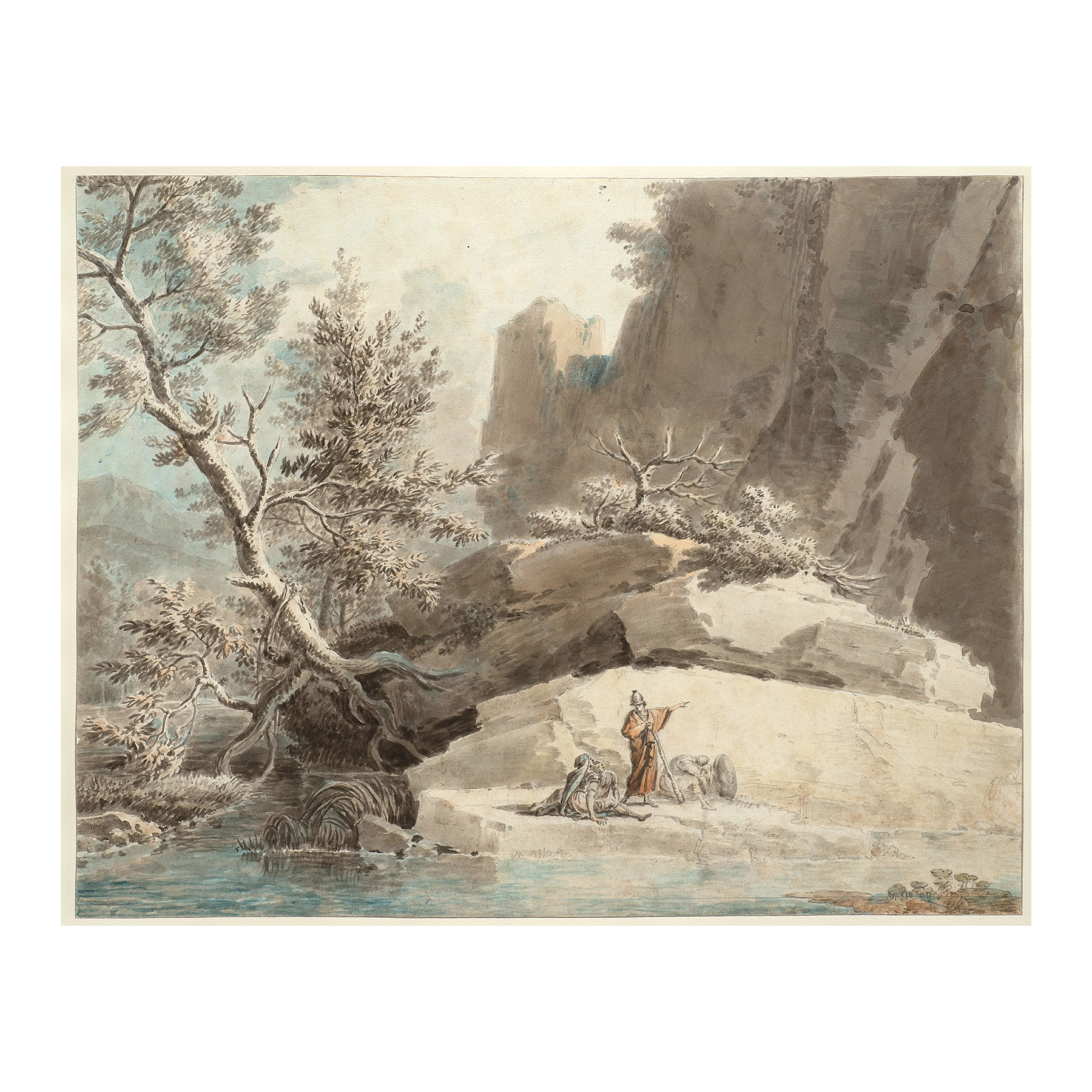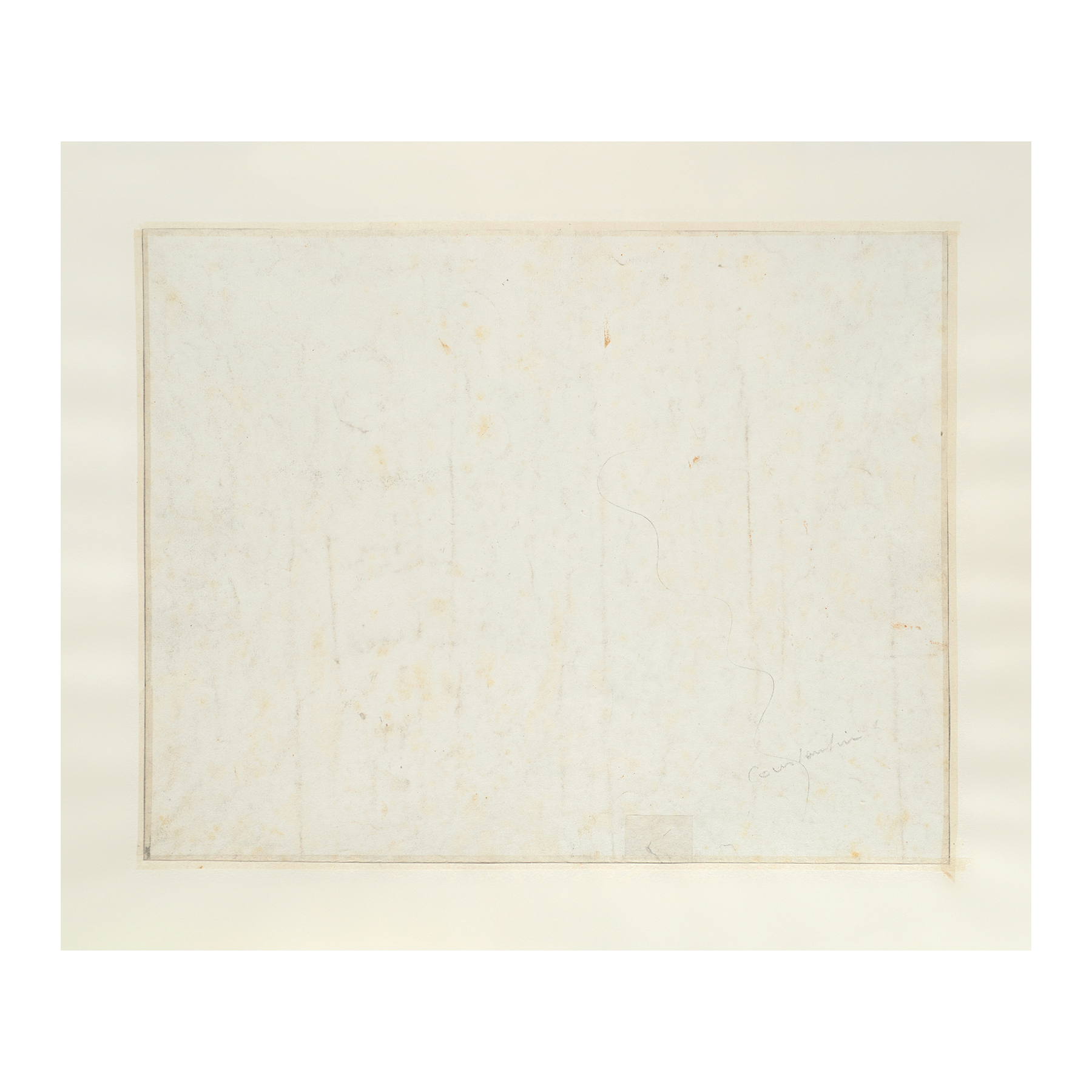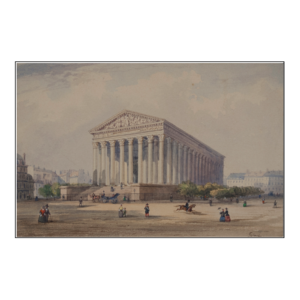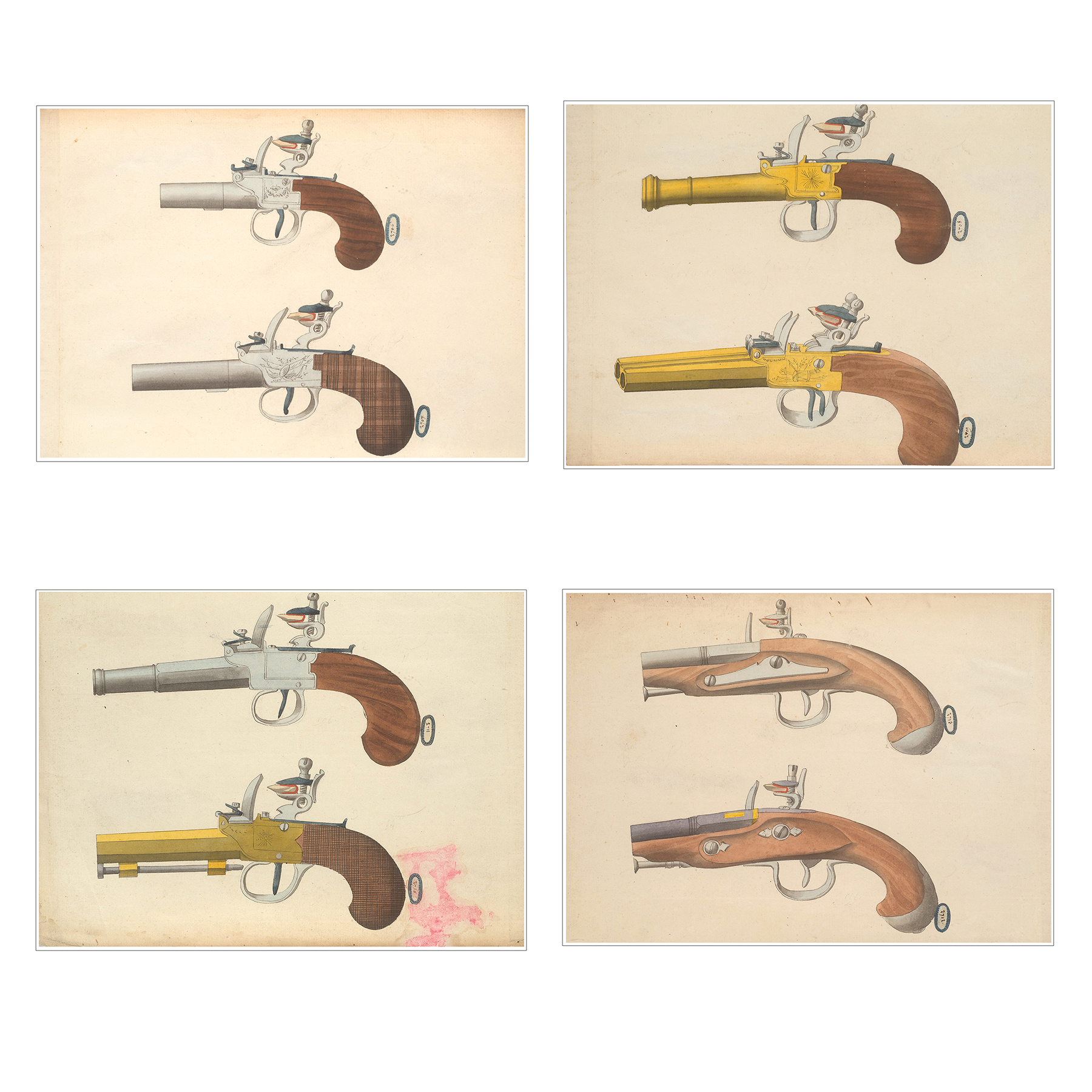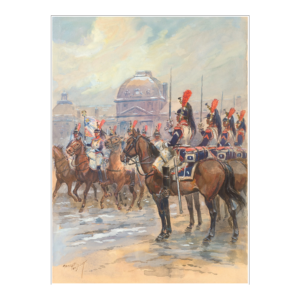Jean Antoine Constantin dit Constantin of Aix
Marseilles, 1756 – Aix-en-Provence, 1844
Landscape with Resting Soldiers
Pencil, pen, brown ink and watercolor.
253 x 320 mm – 9 15/16 x 12 5/8 in.
Annotated in pencil on the back Constantin.
Born in Marseille, Constantin spent his career in Aix-en-Provence. He was sent to Rome by his patron M. Perron, where he first tried to paint, but quickly decided to concentrate on landscape drawing. His Roman stay was interrupted by severe fevers and he had to return to France less than three years later. There he ceaselessly painted and drew, landscape almost exclusively. Appointed director of the drawing school in Aix-en-Provence in 1787, Constantin taught François-Marius Granet and Auguste de Forbin, but the Revolution abolished his position. Made Professor at the Digne school during the Empire, he returned to Aix in 1813 where he settled definitively. Granet and Forbin supported him all his life, ensuring he was awarded the gold medal at the Paris Exposition of 1817, the title of Chevalier of the Legion of Honour in 1833 and a lifetime pension. Granet, who greatly admired Constantin, apparently said of him to Forbin: “He will always be the master. We are not worthy to unknot the laces of his shoes” (see A. Alauzen, La Peinture en Provence, Marseille, 1987, p. 181).
Much collected by Provencal families, Constantin is regarded as the “father of the Provencal painting”. Indeed, he contributed to the formation of a taste for landscape there but also more further afield through his pupils, many of whose careers were more widespread than his.
Constantin drew en plein air using wash to reproduce a chosen point of view as faithfully as possible, or pen to fill his numerous sketchbooks. He also liked to draw sites and townscapes, which he reworked in his studio sometimes combining brown and grey inks in a more elaborate fashion. The use of watercolour in the present drawing testifies to its nature of a work per se, as opposed to work drawings, meant to be sold to collectors and shown on the walls.
Condition report – Good condition – false margin.

